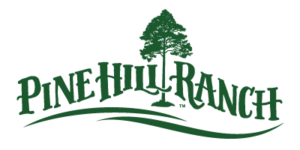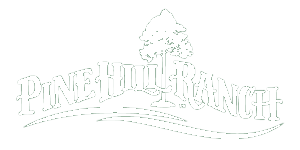When learning how to ride a horse, one of the most commonly asked questions is “What’s the difference between English and Western horseback riding?” There are plenty of horse riding styles, but these two are the most common riding styles in North America. The one you choose comes down to preference, but you can certainly learn both if you’re up for it. But before you go to Google and search “English style horseback riding near me,” here are some of the main differences between English and Western riding.
Tack
Tack is the word for all of the horse’s equipment and accessories. By far, the biggest difference between English and Western horse riding tack is the saddle. Western riding uses a bigger and heavier saddle than its English counterpart. It was designed this way to make it more comfortable for cowboys in the good old West, who would spend long hours in the field herding cattle on horseback.
Due to the Western saddle’s size and shape, weight is evenly distributed along the horse’s back. This made it easier for the cowboys to carry equipment and anchor a rope to the saddle’s horn and secure cattle to it with a lasso. The Western saddle also has a deep seat, which helps the rider maintain their upright position on the horse.
The saddle used for English-style horseback riding is much smaller and lighter compared to the Western saddle. The English saddle we know and love today was designed for fox hunting in the 18th century. This is because riders needed a saddle that was secure and comfortable for the ride but not didn’t hinder the horse’s speed and flexibility. Foxhunting required chasing foxes at high speeds and jumping over obstacles like fences and ditches. A heavy saddle wouldn’t have been ideal for this.
An English saddle also allows the rider to feel more of the horse’s movements during the ride. This gives the rider closer contact and a feeling of being one with the horse.
For instance, when jumping over an obstacle, riders need to lean back, which was difficult with the old heavier saddle due to its high cantle. The English saddle made it easier with its low cantle, allowing riders to easily maneuver jumps and keep up with the hounds and fox.
Whether you’re looking for Western or English-style horseback riding, you will find a variety of saddles. These saddles are designed for various disciplines in both English and Western riding.
Disciplines
As you become an advanced rider, you might start looking into disciplines. Essentially, disciplines are just sports that you can do while riding a horse. While some disciplines are for both styles of riding, others are specific to either English or Western horse riding. It is not necessary to be involved in a discipline as a horse rider, but learning one can greatly improve one’s ability to ride a horse or allow one to participate in competitions.
Here are some of the popular disciplines for English style horseback little rock:
- Dressage: Derived from the French word for ‘train,’ dressage is an event where the rider displays how well-trained their horse is. Communication is key between the horse and rider because they have to work together to complete a series of tests during the event. Not only do they have to complete them, but they have to do it effortlessly and with elegance and grace – sort of like a ballet.
- Jumping: This is an event that involves jumping over a series of obstacles, usually fences, at various heights. If the horse knocks down a fence or refuses to jump, the rider is penalized. Types of jumping events include a timed obstacle course and an elimination-style event where the fence is raised each round until the last horse remains.
- Eventing: Eventing is considered to be the ultimate test, as it puts both the horse and rider’s versatility and flexibility on display. It is a combination of three disciplines that are held over the course of 1-3 days: dressage, cross-country, and jumping. Participants are given a final score once the scores from each event have been tallied (like a triathlon).
When it comes to Western riding, well-known disciplines include:
- Roping: This is a rodeo event where the rider attempts to throw a lasso around a calf’s neck and quickly dismount the horse to restrain it. Since this is a timed event, the fastest rider to tie the calf wins.
- Reining: Reining is considered to be the Western version of dressage. However, instead of being likened to ballet, reining is likened to figure skating. The event involves the rider skillfully guiding the horse through a series of challenging patterns that contain a combination of circles, turns, spins, and stops.
- Barrel Racing: In this event, three barrels are arranged in a clover pattern and the rider needs to maneuver their horse around them with great speed. The rider and horse with the fastest time win the event.
Riding Methods
Another notable difference between English and Western horse riding is the riding method. In English riding, the rider takes the reins in both hands and uses them to control the speed and direction of the horse through the mouth. In Western riding, on the other hand, the rider uses a single hand to hold the reins. The other hand is free, and the rider can rest it on their thigh or leave it to hang gracefully on the side. To control the horse, the Western rider uses a combination of neck reining and weight shifting.
Which Style of Riding is Better for You?
While there are notable differences between English and Western horse riding, there isn’t necessarily a better style. No matter which style you choose, there is no right or wrong decision. As mentioned earlier, it all comes down to preferences, which is especially true if all you want to do is just learn to ride a horse. But if you’re interested in a particular discipline, like jumping or dressage, then go ahead search “English style horseback riding near me.”
Ready to Saddle Up?
Looking to learn English-style horseback in Little Rock? Pine Hill Ranch offers horseback riding lessons no matter your current equestrian level. We have a wide range of activities and classes designed to help you meet your horse riding goals, whether it is for pleasure or to advance your career. Give us a call on (501) 366-8436 or drop us an email today!

